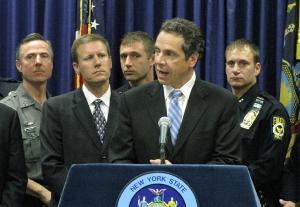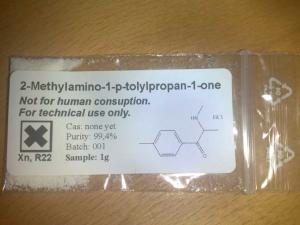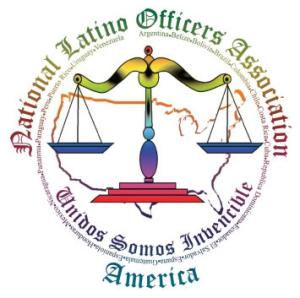A national Latino police officers' association has joined the roster of groups supporting Proposition 19. Disproportionate arrests of Latinos for marijuana might have something to do with it.
As the Prop 19 campaign heads into its final days, it is releasing evidence that California's pot laws are disproportionately aimed at minorities. Today, a report on black pot arrests; next week, one on Latino pot arrests.
George Soros has come through with a million bucks for Prop 19. This last minute boost could put the measure over the top.
The California Chamber of Commerce doesn't want employers to lose the ability to fire unimpaired workers who fail a drug test for pot, so it's now throwing $250,000 into an anti-Prop 19 radio ad campaign.
Two recent polls have Prop 19 losing. Is this the "Reverse Bradley Effect" at work? Let's hope so.
The Yes On 19 campaign Friday released an internal poll showing that likely voters support the initiative to control and tax marijuana by a margin of 56-41 when presented with an automated questionnaire but are less likely to state their support to live interviewers.
Another bloody week in Ciudad Juarez and another rough week for Mexican police.
A Kentucky sheriff gets caught with his hand in the cookie jar, a Texas deputy gets busted for protecting a drug dealer, two Southern California cops get nailed for doing robberies disguised as drug busts, and a small-town Wisconsin cop lets her crack habit get the best of her.
There are two major party candidates for governor in New York. Guess which one opposes medical marijuana.
Bureaucratic reflexes have kicked in at the European Union. Confronted by a new drug, mephedrone, the EU calls for a continent-wide ban.
Events and quotes of note from this week's drug policy events of years past.
The National Latino Officers Association (NLAO) endorsed Proposition 19 Wednesday, citing a new report that found Latinos are disproportionately arrested for simple marijuana possession in California. Latinos are arrested at two to three times the rate of whites, the report found, even though they use marijuana at a lower rate than whites.
Prop 19 would legalize the possession of up to an ounce of marijuana by adults 21 or older and allow them to grow up to 25 square feet of pot and possess the resulting harvest. It would also allow cities and counties to permit, regulate, and tax the commercial cultivation and sale of marijuana.
"As police officers sworn to protect public safety and the well-being of our community, NLAO is proud to endorse Proposition 19," said the group's Manuel Rodriguez at a Wednesday press conference. "Prohibition is dangerous and deadly. Keeping marijuana prohibition has allowed a lucrative black market and threatened public safety in our community and the USA," he said. "Instead of making our streets safer, we're spending that money incarcerating tens of thousands of people, including many Latinos."
While Latinos are more likely than whites to be arrested for pot possession in California, they are also arrested at rates disproportionate to their numbers in the state. In Irvine, for example, Latinos make up 9% of the population, but account for 20% of all pot possession arrests. Similarly, in San Jose, Latinos account for 30% of the population, but 55% of all pot possession arrests, the report found.
California is home to some 14 million Latinos, who account for 37% of the state's population. But because many Latinos are foreign nationals, they account for only 21% of the state's electorate. Still, Latinos are the largest ethnic minority in the state, and nearly two-thirds of them are registered Democrats. Support for Prop 19 among Latino voters has varied widely in polls, and Wednesday's press conference and endorsement were designed to bring this key demographic over to the "yes" side.
"This report documents very significant and widespread disparities in arrest rates for low-level marijuana possession," said Stephen Gutwillig, California director for the
Drug Policy Alliance, which sponsored the report. "Latinos have been arrested at double and triple the rate of whites in the past few years. There has been an extraordinary escalation in arrests for small amounts of marijuana in the past 20 years," Gutwillig added, noting that pot arrests have tripled to more than 60,000 annually since 1990.
The big increase in marijuana possession busts has come as arrests for all other crimes, including other drug offenses, have dropped dramatically in the state, Gutwillig noted. "At the heart of the dramatic increase in arrests have been substantial race-based disparities, specifically targeting Latinos and African-Americans, and especially young African-Americans and Latinos."
Since federal arrest data does not include a specific category for Latinos, marijuana arrests rates for the group are substantially undercounted, Gutwillig said. Disproportionate minority arrest rates are not the result of racist cops, but a systemic problem, he added. "The disparities documented in this report are the result of routine, pervasive police practices," he said. "This is a statewide phenomenon."
Also at the press conference was Diane Goldstein, a retired lieutenant commander with the Redondo Beach Police Department and a member of
Law Enforcement Against Prohibition (LEAP). "The current war on drugs has not just failed," she said, "but is a policy disaster. We need solutions that deal with our communities' drug problems. We believe that through regulation, control, and taxation, we will actually decrease the likelihood of the youth in our community using marijuana," she said. "Drug abuse is a health problem, not a law enforcement matter. It is time for us to overcome our fears and and honestly assess the results of a drug war against our youth. Proposition 19 is a step in the right direction."
Police have other, more pressing priorities than nickel and dime pot busts, said Rodriguez. "We as the NLOA are backing California on this so we can concentrate on crimes that are violent," he said. "We've got worries about terrorists and explosions and two wars going on. We can concentrate more on terrorism instead of going into communities and locking up Latinos and African-Americans. We can use that money from marijuana revenues for schools and education," he said.
Proposition 19 spokesperson Dale Sky Jones also addressed the press conference. "We've found in California and across the country that currently policy has failed," she said. "We have an opportunity to take cannabis and its profits out of the hands of criminals and to put it in the hands of those who will control and regulate and tax it. Prop 19 was written to protect our kids, and we have an opportunity to create tens of thousands of green, sustainable jobs for households."
It's less than a week from election day, the vote for Prop 19 is going to be very close, and every endorsement counts. Now, the campaign has one more law enforcement group on its side.
back to top
In a new report released Friday, the Drug Policy Alliance (DPA) and the California NAACP charged that African-Americans have been disproportionately targeted in low-level marijuana possession arrests. The report, Arresting Blacks for Marijuana Possession in California: Possession Arrests in 25 Cities, 2006-2008, found that despite lower use rates, African-Americans were three, four, six, or even 13 times more likely to be arrested for pot possession than whites.
The report's release is timed to give Proposition 19, the marijuana legalization initiative, a boost in the few remaining days until election day. It was released at a press conference where California NAACP and DPA representatives were joined by Prop 19 campaign head Richard Lee, Law Enforcement Against Prohibition (LEAP) executive director Neill Franklin, Hollywood actor Danny Glover, and former US Surgeon General Dr. Joycelyn Elders.
The report found that in Los Angeles, with 10% of the state's black population, blacks were seven times more likely to get busted than whites. In San Diego, the state's second largest city, blacks were six times more likely to get busted. Ditto for Sacramento. In Torrance, blacks were 13 times more likely to be busted than whites.
"This report documents enormous, widespread race-based disparities in the arrests of nonviolent, low-level marijuana possession offenders," said Stephen Gutwillig, California state director for the Drug Policy Alliance. "The context is an enormous increase in the number of arrests for low-level possession in the past 20 years. Arrest rates for all other crimes have plummeted, from rape and murder to all other drug possession crimes, but marijuana possession arrests have tripled since 1990, from around 20,000 then to 61,000 last year. This was made possible by the targeting of communities of color, specifically African-Americans and Latinos, and more specifically, young African-Americans and Latinos."
It's not just that blacks are arrested disproportionately to whites. They are also arrested at rates far exceeding their percentage of the population. In Los Angeles, blacks make up 10% of the population, but 35% of all marijuana possession arrests. In Sacramento, it's 14% and 50%.
"These disparities were built from routine, pervasive, system-wide police practices," said Gutwillig. "This is not the result of a few racist cops; this is the way the system works."
"I don't think there is any question this is a civil rights issue," said California NAACP executive director Alice Huffman. "If you don't believe that, you don't believe in justice in America."
"We're spending billions of dollars each year on the war on drugs," said Dr. Elders. "It's been a war on young black males. Wars are supposed to end sometime. It's time to end this war. Proposition 19 is an opportunity to take drugs out of the hands of the drug cartels and put them where they can be controlled and taxed."
"This is not about a right to get high, it's an issue of a policy that does not work and is damaging to our society and most importantly, specifically damaging to people of color," said LEAP's Neill Franklin. "Marijuana prohibition is the most dysfunctional public policy in this country since slavery. The violence generated in our communities is unbelievable and it's because of the criminal market this policy creates. The lives of young African-Americans are being lost every day, and whether they lose their lives to violence or to a prison sentence, both are devastating," he said.
"This is an opportunity for law enforcement to get it right," said the former Maryland narcotics officer. "We spend a majority of our time dealing with low-level drug offenders, mainly marijuana," Franklin said. "In the 1960s, we solved nine out of 10 murders; now it's six out of 10. When you apprehend a murderer, murders go down. But when you take someone off the streets for selling marijuana, sales don't go down, and the violence increases because people are fighting for market share."
"I want to say publicly that I support Proposition 19," said film star Danny Glover. "The current laws do not work; they have failed us," he said. "We know we are arrested disproportionately. This is a civil rights issue," he maintained.
"I'm not a marijuana smoker, although I have tried it in the past, but I don't want to stand in the way of people who want to use marijuana recreationally," Glover continued. "This is a long battle, and we're on the right side."
"I've always seen cannabis prohibition as causing a war between police and citizens," said Lee. "Police are supposed to serve and protect, not wage war on the populace. We need police back protecting us from real criminals, not ourselves."
The Prop 19 campaign and DPA did it again this week, this time with Latino marijuana possession arrest rates. But it's already clear that racial disparities in the enforcement of California's pot laws exist, and simply decriminalizing marijuana possession, as Gov. Schwarzenegger did last month, will not change anything in that regard, at least not directly. Minority youths can still be hassled, harassed, and searched for an infraction, just as they were for a misdemeanor. It will take legalization to end such practices.
back to top
Billionaire investor George Soros has donated $1 million to support Proposition 19, a campaign spokesman told the Chronicle Tuesday. The donation came the same day Soros penned an op-ed in the Wall Street Journal saying he supported the marijuana legalization initiative.

George Soros (wikimedia.org)
The donation was made to the Drug Policy Action Committee to Tax and Regulate Marijuana, a pro-Prop 19 fund controlled by the
Drug Policy Alliance (DPA), said Tom Angell, a spokesman for
YesOn19. Tony Newman, a spokesman for DPA confirmed the donation.
It is unclear how the money will be spent, but both proponents and opponents of the measure have begun limited TV and radio ad buys as the clock ticks down toward election day.
The measure would legalize the possession of up to an ounce of marijuana by adults 21 or over. It would also allow them to grow up to 25 square feet of pot and possess the resulting harvest. Cities and counties would have the local option of permitting, taxing, and regulating marijuana sales and cultivation.
The race is very close. The
Talking Points Memo Polltracker, based on the average of all polls taken on Prop 19 this year, now has the measure trailing by one percentage point. Last minute ad campaigns and get out the vote efforts could make the difference between victory and defeat.
back to top
The California Chamber of Commerce has begun a $250,000 radio ad campaign against Proposition 19, the tax and regulate marijuana legalization initiative. The first ads hit the airwaves last Friday, the business group announced in a statement.
Here is the Prop 19 language that has the Chamber so bestirred: "No person shall be punished, fined, discriminated against, or be denied any right or privilege for lawfully engaging in any conduct permitted by this Act or authorized pursuant to Section 11301 of this Act. Provided however, that the existing right of an employer to address consumption that actually impairs job performance by an employee shall not be affected."
The Chamber wants employers to continue to be able to fire workers for failing a drug test for marijuana, even though such test do not measure actual impairment, but only the presence of metabolites in the body. Those metabolites can remain for days or even weeks after the psychoactive effects of marijuana have worn off.
"Imagine coming out of surgery and the nurse caring for you was high or having to work harder on your job because a co-worker shows up high on pot," intones a woman's voice in the ad. "It could happen in California if Proposition 19 passes. Prop 19 would do more than simply legalize marijuana. Prop 19 is worded so broadly is would hurt California's economy, raise business costs and make it harder to create jobs."
The Chamber has prepared a legal analysis that argues that Prop 19 would create a "protected class" of pot-smoking workers, and "expose workers to increased risk of injury, jeopardize federally funded projects and jobs, and add more liabilities and costs to already overburdened employers."
"The employer impacts and workplace safety concerns highlighted in CalChamber’s legal analysis have been prominently featured in the many statewide editorials opposing Proposition 19," said Allan Zaremberg, president and CEO of the California Chamber of Commerce. "We want to be sure we reinforce the facts with voters so they understand that this measure will undermine the ability of employers to ensure a safe work environment and create higher costs for those who provide and create jobs."
In addition to the Reefer Madness-style fear-mongering already cited, the Chamber ad falsely claims that "employees would be able to come to work high, and employers wouldn’t be able to punish an employee for being high until after a workplace accident," when the initiative clearly states they can sanction actual impairment.
It's the final stretch in the campaign, and big business has begun the mud-slinging.
back to top
[Update: Two more polls showing Prop 19 trailing came out after this issue of the Chronicle went to bed. Read about them here. Then volunteer (you don't need to be in California, all you need is a phone), because it's complicated and there's only one poll that counts, the one on Election Day.]
Two polls released Tuesday show Proposition 19, the California tax and regulate marijuana legalization initiative, in trouble. This follows mostly (but not entirely) bad polling news late last week, including an LA Times poll finding the initiative's worst numbers yet. Whether Tuesday's million dollar gift to the campaign by financier George Soros can make a difference in the final days, or whether a postulated "Reverse Bradley Effect" is causing support for the initiative to be unreported in polls conducted by live interviewers, will be seen next Tuesday.

marijuana plants (wikimedia.org)
The
latest poll from Public Policy Polling (PPP) shows declining support for Proposition 19, California's tax and regulate marijuana legalization initiative. That poll has the measure losing, with 48% opposed and only 45% in favor.
A PPP poll in July had Prop 19 winning 52% to 36% and a PPP poll in September had it leading 47% to 38%. Tuesday's poll continues the downward trend line.
A new
Suffolk University poll also has Prop 19 losing, 55% to 40%. That poll showed majority support for the measure only among voters under 35, 58% of whom said they would vote for it. All other age groups opposed it. The poll also showed Prop 19 losing even in the San Francisco Bay area, with support there at only 44%.
The Suffolk University poll was a statewide poll of 600 likely voters conducted by live telephone interviews and has a 4% margin of error. Prop 19 has come out ahead in automated polls, leading some observers to suggest that respondents are less likely to respond honestly about supporting marijuana legalization in polls with live polltakers.
The putative phenomenon has been dubbed the "Reverse Bradley Effect," after former LA Mayor Tom Bradley, who lost a statewide election despite leading in the polls. Observers suggested that people were reluctant to tell pollsters they were voting against a black candidate.
The Prop 19 campaign recently released its own
internal poll, which showed the measure passing 56% to 41% when people were robo-polled and leading 48% to 45% when automated and live poll data were combined.
Stay tuned. There will be at least two more polls released before election day, one by PPP and one by the Field Poll. But the only poll that counts is the one voters head to last week.
back to top
FOR IMMEDIATE RELEASE: October 22, 2010
Yes On 19 Internal Poll Shows Majority Support for Marijuana Initiative
Results Reveal Voters More Likely to Voice Support for Prop. 19 in Automated Polls Than to Live Callers
OAKLAND, CA -- The Yes On 19 campaign Friday released an internal poll showing that likely voters support the initiative to control and tax marijuana by a margin of 56-41 when presented with an automated questionnaire but are less likely to state their support to live interviewers.
"As the polling shows, there still seems to be somewhat of a social stigma attached to marijuana and the politics surrounding it," said Dan Newman, a political strategist working with the Yes On 19 campaign. "We're confident that when Californians find themselves in the privacy of voting booths on Nov. 2, they will vote to end decades of failed and harmful marijuana policies. Very few people think the current policy is working."
The results affirm earlier suggestions by New York Times analyst Nate Silver, the blog FireDogLake and others identifying a so-called "Reverse Bradley Effect" indicating that voters may be uncomfortable telling strangers how they would vote on controversial policies.
The Yes On 19 internal poll was conducted by EMC Research on October 13-14 and had a total sample size of 1,403 respondents. The margin of error is +/- 2.6 percentage points. The full results can be viewed at http://www.YesOn19.com/internalpoll.
Taken in context with other recent polls, these results show the race to be extremely close, as it has been throughout the summer and early fall. With the exception of Survey USA, which has consistently shown Prop. 19 to be in the lead, most other recently released polls have been conducted by live interviewers.
Yes On 19 has a team of hundreds of committed volunteers who are spending their free time calling undecided voters to help shore up support for the initiative. In contrast, the No On 19 campaign seems to be a largely top-down operation.
For more information please visit http://www.YesOn19.com.
# # #
back to top
by Bernd Debusmann, Jr.
Mexican drug trafficking organizations make billions each year smuggling drugs into the United States, profiting enormously from the prohibitionist drug policies of the US government. Since Mexican president Felipe Calderon took office in December 2006 and called the armed forces into the fight against the so-called cartels, prohibition-related violence has killed more than 28,000 people, the government reported in August. The increasing militarization of the drug war and the arrest of dozens of high-profile drug traffickers have failed to stem the flow of drugs -- or the violence -- whatsoever. The Merida initiative, which provides $1.4 billion over three years for the US to assist the Mexican government with training, equipment and intelligence, has so far failed to make a difference. Here are a few of the latest developments in Mexico's drug war.

Plaza de Armas, Praxedis G. Guerrero
In Praxedis Guadalupe Guerrerro, Chihuahua,
a 20-year old criminology student was sworn in as police chief. Marisol Valles Garcia, who studies in Ciudad Juarez, plans to use an all-female, unarmed force of 13 people to fight crime in the town of 8,500 residents. The position has been open since the previous police chief was assassinated in July 2009.
In Tijuana,
Mexican soldiers seized 134 tons of marijuana in a series of raids. Eleven individuals were also taken into custody. The marijuana was wrapped in an estimated 10,000 packages with various labels, including Homer Simpson saying "Let's get high, dude" in Spanish.
Friday, October 22
In Ciudad Juarez,
at least 24 people were murdered in several incidents across the city. In one incident, 14 people, mostly teenagers, were killed when gunmen stormed a house where a birthday party was taking place. Among the dead was 13-year old girl. The gunmen arrived in three cars and told the victims that they were looking for "El Raton," who Mexican media sources have reported is a member of the Sinaloa-cartel allied Artist Assassins gang. In other incidents, a municipal police captain was gunned down, and two women were shot point blank and tossed from a vehicle.
Sunday, October 24
In Tijuana,
13 people were killed at a drug rehabilitation center when presumed cartel gun men opened fire. There is speculation the killings could be linked to a massive, 135-ton pot seizure in the city last week.
In Saltillo, Coahuila,
a woman and her two children were killed after being caught in the middle of a firefight between a convoy of police and soldiers and unidentified gunmen. Maria Angelica Galindo Sanchez, 47, was a daughter of the former mayor of the city, which is the capitol of Coahuila. The two children were aged 14 and 18.
Monday, October 25
On Youtube,
a video was posted in which unidentified gunmen interrogate the kidnapped brother of Patricia Gonzalez, the former head prosecutor for the state of Chihuahua, in which Ciudad Juarez is located. In the video Mario Gonzalez is seen surrounded by five heavily armed men, and claims he took bribes from the Juarez Cartel and ordered several killings.
Tuesday, October 26
In Nuevo Leon,
the mayor of a small town near Monterrey announced that his entire police force quit after their headquarters was attacked with automatic weapons and grenades the night before. Nobody was injured in the attack, in which six police officers hid as the building came under heavy fire for approximately 15 minutes.
Wednesday, October 27
In Tepic, Nayarit,
15 people were killed at a car wash when three SUVs full of gun men pulled up and began indiscriminately shooting at employees and customers. The unemployed young men who work informally washing cars sometimes work as street level spies for warring drug gang factions.
Total Body Count for the Week: 199
Total Body Count for the Year: 8,707
Read the previous Mexico Drug War Update here.back to top
A Kentucky sheriff gets caught with his hand in the cookie jar, a Texas deputy gets busted for protecting a drug dealer, two Southern California cops get nailed for doing robberies disguised as drug busts, and a small-town Wisconsin cop lets her crack habit get the best of her. Let's get to it:

too much cash can corrupt cops
In Carlisle, Kentucky,
the Nicholas County sheriff was indicted October 18 for stealing $43,000 in cash from the department's drug asset forfeiture account. Sheriff Leonard "Dick"
Garnett was indicted by a Nicholas County grand jury on charges of unlawful taking of more than $300 and abuse of public trust of more than $10,000. He is also accused of spending more than $10,000 in federal asset forfeiture funds for his own personal use.
Garnett, who used some of the money to make car payments on a vehicle not owned by the county and some to buy exercise equipment, went down after a state auditor checked the county's books. He is out of jail and running unopposed for reelection as sheriff next week.
In Houston,
a Harris County sheriff's deputy was arrested Monday for allegedly accepting bribes to access confidential law enforcement data bases and providing protection for an ecstasy dealer. Deputy George Wesley Ellington, 38, is accused of twice receiving $500 for accessing the data bases and providing protection for a person he believed to be possessing and transporting ecstasy. He is looking at up to 20 years of prison on the two counts.
In Los Angeles,
two former Southern California police officers were convicted Wednesday of participating in a robbery ring that disguised home invasions as drug raids. Brothers William and Joseph Ferguson, the former an ex-LAPD officer and the latter an ex-Long Beach officer, were convicted of various charges, including conspiracy to deprive people of their rights under color of law and conspiracy to possess marijuana and cocaine. William Ferguson was convicted on 13 counts and acquitted on five more, while his brother was convicted on three counts. They were part of a ring that conducted about 40 robberies from 1999 to 2001 in which members would steal cash and drugs, then sell the drugs on the street. Fifteen people have pleaded guilty in the investigation, including the gang's ringleader, former LAPD officer Ruben Palomares, who worked with William Ferguson at the scandal-plagued Rampart Division until both were fired in 2003.
In Madison, Wisconsin, a
former Platteville police officer pleaded guilty October 20 to maintaining a drug house. Michelle Salentine, 29, was arrested in April over allegations she was using drugs while in uniform and again in October as she and her brother sat and argued in a parked car. In that bust, police found heroin, cocaine, marijuana, drug paraphernalia, and a kit to defeat drug tests. Salentine admitted being strung out on crack and allowing about a pound of cocaine to be stored at her home. She's looking at up to 20 years in federal prison.
back to top
New York Democratic gubernatorial nominee Andrew Cuomo said Sunday that he opposes legislation to allow for the use of medical marijuana in the Empire State. Cuomo's remarks came in response to a question prompted by a statement by Republican nominee week Carl Paladino a week earlier that the subject should be put to a popular vote.

Cuomo as Attorney General
New York does not have a voter initiative process, but that didn't stop the Tea Party-supported Paladino from suggesting public referendums on a number of hot button issues, including gay marriage, enacting tougher immigration laws, and medical marijuana. "Let the people decide,"
Paladino said at a Taxpayer Party forum in Middletown when asked about medical marijuana.
The irascible arch-conservative Palodino, an upstart upstate candidate, trails badly in the polls. According to
Real Clear Politics, in the average of all polls on the race, Paladino gets trounced 58% to 31%. The most recent poll, taken over the weekend, has Cuomo winning 60% to 37%.
But even that huge lead wasn't comfortable enough for Cuomo, who in past years lent strong support to the campaign to repeal New York's Rockefeller Drug Laws, to take a similarly progressive stance on medical marijuana. Nor is evident support for medical marijuana among key Cuomo constituencies enough to budge him. According to a
March poll, 50% of New Yorkers supported medical marijuana. The figures were higher for liberals (72%), young voters (62%) and Democrats (55%).
When asked by reporters Sunday about medical marijuana,
Cuomo said he opposed a medical marijuana bill that had passed the state Assembly. "I think the dangers outweigh the benefits," he said. "I understand the benefits. I understand that it's been tried in other places. I think the risks outweigh the benefits."
When asked about possible revenues from taxing medical marijuana, Cuomo refused to bite. "A lot of things could raise revenues," he said."Legalizing prostitution could raise revenues. I'm against that, too."
And speaking of prostitution, it's worth noting that Paladino isn't the only option for marijuana reformers. Former madam
Kirsten Davis is running on a marijuana and prostitution legalization platform on the Anti-Prohibition Party ticket, though her support is too small to show up in the polls. In the Senate race, long-time drug reformer
Randy Credico has emphasized anti-prohibitionist and other drug reform positions in his independent campaign taking on Chuck Schumer.
The positions taken by the Republican and Democratic gubernatorial candidates in New York are yet another indication that good drug policy reform positions are the exclusive domain of neither major party.
(This article was published by StoptheDrugWar.org's lobbying arm, the Drug Reform Coordination Network, which also shares the cost of maintaining this web site. DRCNet Foundation takes no positions on candidates for public office, in compliance with section 501(c)(3) of the Internal Revenue Code, and does not pay for reporting that could be interpreted or misinterpreted as doing so.)back to top
The European Commission, the executive body of the European Union (EU), called for an EU-wide ban on the synthetic drug mephedrone last week, describing it as "dangerous psychoactive substance," but based that call on scanty evidence. The stimulant drug, with effects likened to those of cocaine and ecstasy, is already illegal in 15 EU countries, but remains available in 12 more.

mephedrone sample (photo from mephedrone.org)
Mephedrone, also known as meow meow, MCAT, or meph, is derived from cathinone, the psychoactive stimulant in khat. It first appeared in European markets in 2007, presumed to be courtesy of Chinese manufacturers, and has been popular in the club scene. For the last year, mephedrone has been breathlessly reported on, especially by tabloids in Britain, where it is now banned.
"It is a dangerous drug that is available online and on the street corner. People have died because of this drug, so I urge governments to move fast to control and criminalize it," said justice commissioner Viviane Reding in a
Wednesday statement. "We have a responsibility to protect young people against dangerous new psychoactive substances."
The commission claimed that mephedrone "has been linked to at least 37 deaths in the UK and Ireland alone" and acted in an emergency manner because of a
mephedrone risk assessment report published last week by the European Monitoring Center on Drugs and Alcohol (EMCDDA). The commission added that the report "showed that mephedrone can cause acute health problems and lead to dependency."
But the report itself says that no direct causal link can yet be made between mephedrone and the reported deaths. "There have been a very limited number of deaths reported to be related directly to the use of mephedrone," the EMCDDA report said.
There are only two in which mephedrone appears to be the sole cause of death. Of the other 35 reported deaths, the EMCDDA report noted, "In some of these cases it is likely that other drugs and/or other medical conditions or trauma may have contributed to or been responsible for death. The inquests into the deaths are pending for the majority of these cases therefore it is not possible at this time to determine the contribution of mephedrone."
The evidence base for assessing mephedrone is weak, the report found. "The studies available on mephedrone are few, largely preliminary and focused on user self-reports. To date no epidemiological data on prevalence has been published. The majority of studies originate from the United Kingdom and evidence from other member states is scarce."
As a result, EMCDDA warned against a rush to judgment about mephedrone's danger. "Taken as a whole, the scientific evidence base available for drawing conclusions is limited and this proviso should be borne in mind when interpreting the findings of the risk assessment exercise," the report said.
But that, of course, is what the EU has done with its call for a union-wide ban on the new club drug. That didn't sit well with former British Advisory Council on the Misuse of Drugs head David Nutt, who was fired for criticizing the government there as "politically motivated rather than scientifically justified" for rescheduling cannabis to a more serious schedule.
"An EU-wide ban on mephedrone is remarkable for its lack of scientific evidence," Nutt told
EUobserver. "The report primarily relies on user experiences and a handful of hospital admissions, with no formal studies to demonstrate the actual or potential harms of the drug. It is not yet possible to say how harmful mephedrone is given the lack of evidence. However, by legislating on a substance without reliable scientifically-based evidence, we run the risk of causing more harm through criminalizing users than might be caused by the drug itself. The evidence on drug harms should not be sacrificed for political and media pressure."
back to top
November 2, 1951: The Boggs Act nearly quadruples penalties for all narcotics offenses and unscientifically lumps marijuana in with narcotic drugs. (Narcotics are by definition a class of drugs derived from the opium poppy plant, containing opium, or produced synthetically and to have opium-like effects. Opioid drugs relieve pain, dull the senses and induce sleep.)
November 1, 1968: The UK's Advisory Committee on Drug Dependence releases the Wootton Report, recommending that marijuana possession not be a criminal offense.
October 27, 1969: Anthropologist Margaret Mead provides testimony to Congress: "It is my considered opinion at present that marihuana is not harmful unless it is taken in enormous and excessive amounts. I believe that we are damaging this country, damaging our law enforcement situation, damaging the trust between older people and younger people by its prohibition, and this is far more serious than any damage that might be done to a few over-users."
October 27, 1970: Congress passes the Comprehensive Drug Abuse Prevention and Control Act. It strengthens law enforcement by allowing police to conduct "no-knock" searches and includes the Controlled Substances Act, which establishes five categories ("schedules") for regulating drugs based on their medicinal value and potential for addiction.
October 27, 1986: President Reagan signs the Anti-Drug Abuse Act of 1986, an enormous omnibus drug bill which appropriates $1.7 billion to "fight the drug crisis." The bill's most consequential action is the creation of mandatory minimum penalties for drug offenses.
October 29, 1993: The administrator for the Drug Enforcement Administration (DEA), Robert C. Bonner, resigns after three years in office to enter private law practice in Los Angeles. He disagreed with the Clinton administration's increased emphasis on drug treatment, saying it amounted to a decrease in emphasis on law enforcement and the pursuit of cooperation from foreign governments. "Drug treatment, particularly in this town, is the real feel good (method) for how you deal with the drug problem. It doesn't deal with any enforcement of the laws. It makes everybody feel all warm and fuzzy... I think treatment is being oversold," says Bonner.
October 30, 1995: President Bill Clinton signs legislation passed by Congress rejecting a US Sentencing Commission move to reduce penalties for crack cocaine offenses to bring them equal with powder cocaine.
October 27, 1997: After a four-year investigation and a five-month trial, a federal jury returns a not guilty verdict on one racketeering charge against two former US prosecutors who became lawyers for a drug cartel, but fails to reach verdicts on drug trafficking and other charges against the two lawyers.
October 27, 2001: The Guardian (UK) reports that a majority of Britons believe cannabis should be legalized and sold under license in a similar way to alcohol. Some 65 percent of those questioned in a poll agree it should be legalized and 91 percent said it should be available on prescription for sufferers of diseases like multiple sclerosis.
October 28, 2002: The New York Post reports that a Time/CNN poll reveals that 72 percent of Americans now feel that people arrested with small amounts of marijuana should not do any jail time, while just 19 percent favored sending pot smokers to jail. Nearly 60 percent of Americans still want marijuana possession to be considered a criminal offense -- but 34 percent now favor complete legalization. The new poll also offers good news to activists and lawmakers who are calling for the legalization of medical marijuana: 80 percent of those surveyed said they favored dispensing pot for medicinal purposes.
October 31, 2002: The Washington Post publishes a story about a rare interview with BenjamÃn Arellano Félix, the man accused of running Mexico's most ruthless drug cartel, from the La Palma maximum security federal prison in Almoloya de Juárez, Mexico. Arellano said the United States has already lost its war on drugs and that violent trafficking gangs will thrive as long as Americans keep buying marijuana, cocaine and heroin.
November 1, 2002: Every prosecutor in the United States is sent a letter from the Office of National Drug Control Policy (ONDCP) and the National District Attorneys Association (NDAA), urging them to make prosecution of cannabis crimes a high priority and to fight efforts to ease drug laws.
October 27, 2004: In an op-ed piece in the Paris newspaper Le Monde, Raymond Kendall, the chief of the international law enforcement agency Interpol from 1985 to 2000, calls drug prohibition "obsolete and dangerous" and says its continuation represents a missed opportunity for reform. He says prohibition has failed to protect the world from drugs and Europe must take the lead in reforming the drug laws, particularly at the United Nations General Assembly Special Session on drugs in Vienna in 2008.
back to top







